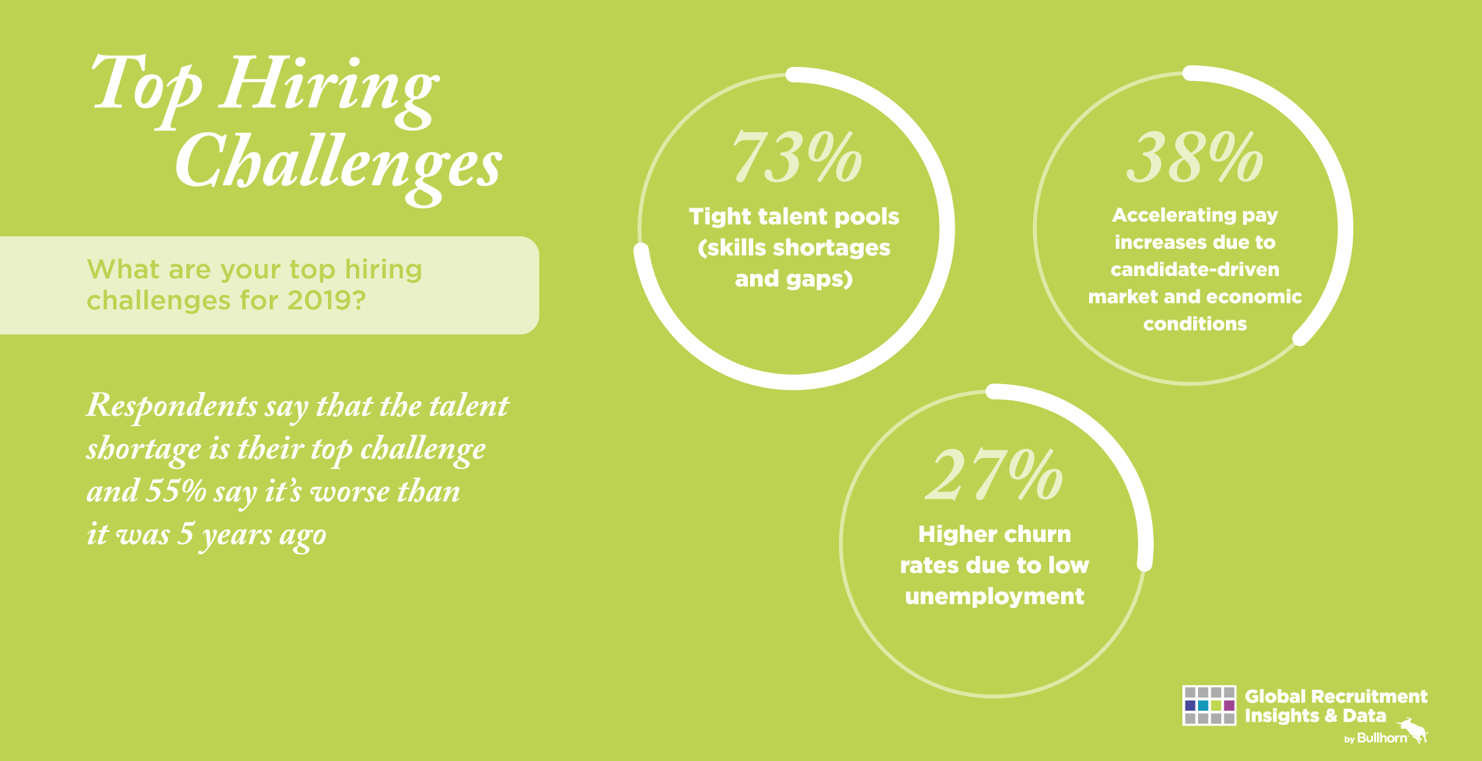How to Persuade Your Clients to Increase Candidate Pay

The talent shortage has been a thorn in the side of staffing professionals for what feels like forever, and many—55 percent of surveyed staffing professionals—think it’s worse now than before. One of the many consequences of the historically low unemployment rate and the skills shortage is that finding and placing candidates has become increasingly competitive.
And according to staffing professionals, many employers aren’t paying enough to compete in this tight candidate market. 78 percent of recruiting pros say employers must accelerate pay increases in order to compete for qualified candidates, and 38 percent say it’s one of their biggest challenges for 2019.

Most staffing pros are on the same page when it comes to candidate pay, but how can you convince your clients to see things your way? We reached out to our customers and staffing experts to get their insights. Here are some of the most common responses.
What’s the best way for staffing firms to persuade their clients to increase candidate pay?
Provide Hard Data
By far, the most common refrain from our surveyed staffing experts was this: If you want to make your case, do it with the numbers. One compelling way to do this is through average marketplace rates. You have a number of tools at your disposal when you need to point out what you believe is a low-marketplace rate. For example, check out this salary calculator from Randstad.
Show, don’t tell. Provide evidence of marketplace rates.—Darren Weeks, aap3 Recruitment
Convince Your Clients to Play the Long Game
For direct hire and contract-to-hire placements, you may want to emphasize the long-term benefits of offering competitive pay to candidates. While fair compensation is important for making a hire, it’s arguably even more important in order to keep the employees you’ve already hired. A recent study found that compensation is still king when it comes to maintaining your staff. And Eighty-two percent of employees expect pay raises every year in order for them to stay at their current companies. If your pay isn’t competitive now, you may not hold onto your best performers for long.
If a candidate is well below market rate for a position, even if they accept the position at that rate, they will be more of a flight risk for a client as their work is undervalued and they could be making more elsewhere. Even if the client is offering something within the average range of salaries for a position, if they are on the lower end, they should expect a lower level of skill among their candidates. Ultimately, providing rates at average or above average market rate will create better candidate retention and satisfaction.—Daria Gourianova, Procom
Paint a Picture of the Candidate Landscape
It’s common knowledge that we’re operating in a candidate-driven market, but as staffing professionals, you have a special insight into this that your clients may lack. By positioning yourself as a candidate expert, you’ll be in a better position to provide advice to your clients that they’ll take seriously. And it certainly doesn’t hurt to have global recruitment data to back up your case.
I think it’s best to explain to them that we are living and working in a true candidate’s market. Unemployment is at historically low figures, and quality people are moving to new roles faster than ever. With that being said, it’s important to translate this reality and help clients recognize that a “good” candidate is interviewing with several other employers. Interviews are no longer one-sided streets. It’s not just the candidate that need to present themselves in the best light, but the employer as well. Candidates will ask their future employer, “What will you offer me that other employers cannot?” It’s up to the client to come through with a projected higher salary to entice the talent to not go to the competition.—Gary Fiore, ACG Resources


